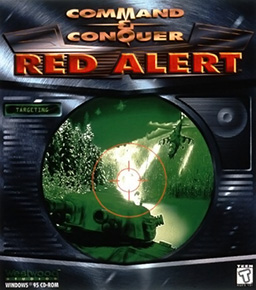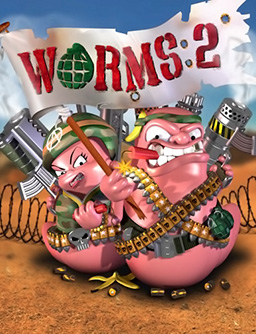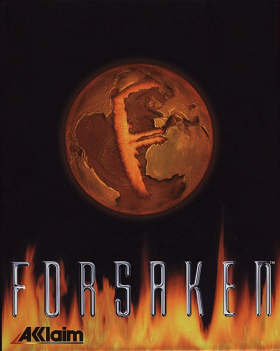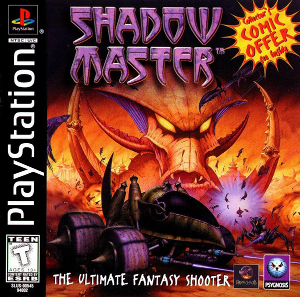
Hexen II is a dark fantasy first-person shooter (FPS) video game developed by Raven Software and published by id Software in 1997. It is the third game in the Hexen/Heretic series, and the last in the Serpent Riders trilogy. Using a modified Quake engine, it features single-player and multiplayer game modes, as well as four character classes to choose from, each with different abilities. These include the "offensive" Paladin, the "defensive" Crusader, the spell-casting Necromancer, and the stealthy Assassin.

Quake III Arena is a 1999 multiplayer-focused first-person shooter developed by id Software. The third installment of the Quake series, Arena differs from previous games by excluding a story-based single-player mode and focusing primarily on multiplayer gameplay. The single-player mode is played against computer-controlled bots. It features music composed by Sonic Mayhem and Front Line Assembly founder Bill Leeb.

Quake II is a 1997 first-person shooter video game developed by id Software and published by Activision. It is the second installment of the Quake series, following Quake.

Quake is a first-person shooter game developed by id Software and published by GT Interactive. The first game in the Quake series, it was originally released for MS-DOS, Microsoft Windows, and Linux in 1996, followed by Mac OS and Sega Saturn in 1997 and Nintendo 64 in 1998.
XCOM is a science fiction video game franchise featuring an elite international organization tasked with countering alien invasions of Earth. The series began with the strategy video game X-COM: UFO Defense created by Julian Gollop's Mythos Games and MicroProse in 1994. The original lineup by MicroProse included six published and at least two canceled games, as well as two novels. The X-COM series, in particular its original entry, achieved a sizable cult following and has influenced many other video games; including the creation of a number of clones, spiritual successors, and unofficial remakes.
Urban Terror is a freeware multiplayer first-person shooter video game developed by FrozenSand. Originally a total conversion of id Software's Quake III Arena, FrozenSand released Urban Terror as a free standalone game in 2007 utilizing ioquake3 as the game engine. While the game engine is licensed under the open-source GPL, Urban Terror's game code is closed source and its assets are freeware but not open content.

Master of Orion is a turn-based, 4X science fiction strategy game in which the player leads one of ten races to dominate the galaxy through a combination of diplomacy and conquest while developing technology, exploring and colonizing star systems.

Battlefield 1942 is a 2002 first-person shooter video game developed by Digital Illusions CE and published by Electronic Arts for Microsoft Windows and Mac OS X. The game can be played in single-player mode against the video game AI or in multiplayer mode against players on the Internet or in a local area network. It is a popular platform for mod developers, with many released modifications that alter the gameplay and theme.

Alien Breed is a top down run and gun video game released in 1991 by Team17 for the Amiga and later in 1993 by MicroLeague for MS-DOS. The game is the first in the Alien Breed series.
Doom WAD is the default format of package files for the video game Doom and its sequel Doom II: Hell on Earth, that contain sprites, levels, and game data. WAD stands for Where's All the Data?. Immediately after its release in 1993, Doom attracted a sizeable following of players who created their own mods for WAD files—packages containing new levels or graphics—and played a vital part in spawning the mod-making culture which is now commonplace for first-person shooter games. Thousands of WADs have been created for Doom, ranging from single custom levels to full original games; most of these can be freely downloaded over the Internet. Several WADs have also been released commercially, and for some people the WAD-making hobby became a gateway to a professional career as a level designer.

Extreme Assault is a video game developed by Blue Byte.

Command & Conquer: Red Alert is a real-time strategy video game in the Command & Conquer franchise, developed and published by Westwood Studios in 1996. The second game to bear the Command & Conquer title, Red Alert is the prequel to the original Command & Conquer of 1995, and takes place in the alternate early history of Command & Conquer when Allied Forces battle an aggressive Soviet Union for control over the European mainland.

Malice is a total conversion for Quake, developed jointly by Team Epochalypse and Quantum Axcess, and published by Quantum Axcess in November 1997 as a commercial game. It would later be bundled with both the original Quake and the Q!Zone add-on in the form of the Resurrection Pack for Quake compilation, distributed by GT Interactive in 1998. Malice, not being a stand-alone total conversion, requires the full version of Quake in order to be played.

X-Men 2: Clone Wars is a 1995 platform game developed by Headgames and released by Sega of America for the Mega Drive/Genesis as a sequel to the 1993's X-Men. The game is based on the adventures of the Marvel Comics superhero team, the X-Men. A sequel, titled X-Women, was cancelled.

Worms 2 is a 1997 artillery tactical game developed and published by Team17 and released for Windows. It is part of the Worms series and a sequel to the 1995 game Worms. As with the first game, players control their team of worms in combat against each other, using a wide collection of rockets, grenades, firearms, explosives, and air strikes, some eclectic and others bizarre. Also as with the first game, the objective is to eliminate all opposing worms and become the sole surviving team.

Forsaken is a 1998 first-person shooter video game. It was developed by Probe Entertainment for Microsoft Windows and PlayStation and Iguana UK for the Nintendo 64 and published by Acclaim Entertainment. A remastered version was released in 2018 for Microsoft Windows, macOS, Linux and Xbox One.
Half-Life 2: Capture The Flag is a multiplayer team-based capture the flag mod developed around Half-Life 2. The public beta version was released on February 23, 2005. The latest version of the mod was released to the public on December 8, 2011. On October 16, 2013, Half-Life 2: Capture The Flag was greenlit on Steam Greenlight.

A first-person shooter (FPS) is a video game centered on gun fighting and other weapon-based combat seen from a first-person perspective, with the player experiencing the action directly through the eyes of the main character. This genre shares multiple common traits with other shooter games, and in turn falls under the action games category. Since the genre's inception, advanced 3D and pseudo-3D graphics have proven fundamental to allow a reasonable level of immersion in the game world, and this type of game helped pushing technology progressively further, challenging hardware developers worldwide to introduce numerous innovations in the field of graphics processing units. Multiplayer gaming has been an integral part of the experience, and became even more prominent with the diffusion of internet connectivity in recent years.

Shadow Master is a video game developed by HammerHead and published by Psygnosis for the PlayStation and Microsoft Windows. It is a first-person shooter in which the player character rides in an armed vehicle. It met with predominantly negative reviews which praised its visuals but criticized it for clunky controls and poorly designed, frustrating gameplay.















